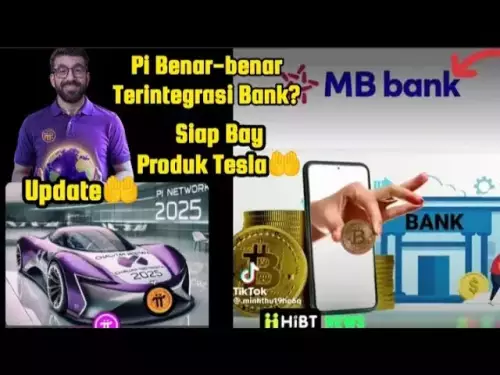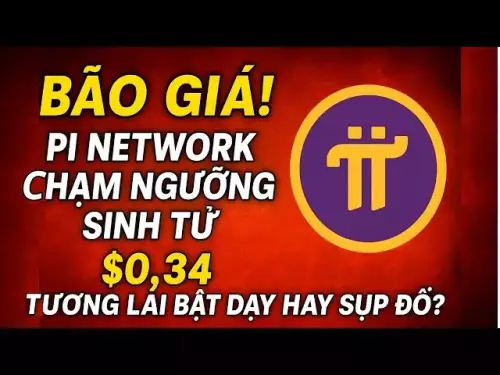 |
|
 |
|
 |
|
 |
|
 |
|
 |
|
 |
|
 |
|
 |
|
 |
|
 |
|
 |
|
 |
|
 |
|
 |
|
Cryptocurrency News Articles
WLFI Token's Wild Ride: Blacklisting, Price Surge, and DeFi Drama
Sep 08, 2025 at 07:30 am
A deep dive into WLFI token's blacklisting of wallets, its subsequent price surge, and the broader implications for decentralized finance.

Hold on to your hats, folks! The WLFI token has been on a rollercoaster lately, with blacklisting drama, price surges, and enough DeFi intrigue to make your head spin. Let's break down what's been happening with WLFI and what it means for the crypto world.
The Blacklisting Bonanza
In September 2025, World Liberty Financial (WLFI) made headlines by blacklisting a wallet belonging to none other than Justin Sun, after he transferred $9 million in WLFI tokens to exchanges. This bold move froze a massive amount of tokens, triggering a 50% price drop and sparking a debate about centralization in DeFi. Talk about a plot twist!
WLFI framed this decision as a measure to prevent market manipulation. According to WLFI Growth Lead Ryan Fang, the team believed that some large holders and centralized exchanges tried to manipulate the WLFI token’s price. They allegedly moved tokens to high-liquidity platforms to sell them off quickly and opened large short positions. However, critics argued that this unilateral action contradicted the core principles of decentralization and community-driven governance that DeFi projects claim to uphold.
But Sun wasn't the only one affected. Earlier, WLFI blacklisted 272 wallets for suspected manipulation, including one wallet associated with Sun. Around 18% of the blocked wallets were frozen because users reported their accounts were compromised, safeguarding user funds and potentially recovering stolen assets. It wasn't just about kicking out the bad guys; it was about protecting the little guys too.
The Price Surge Paradox
Despite the drama, the WLFI token has shown surprising resilience. In the wake of the blacklisting, the token price jumped by 25% in 24 hours, bringing relief to investors and the community. This surge followed WLFI’s bold move to blacklist suspected market manipulators.
Why the surge? Well, blacklisting the wallets restored investor trust and boosted DeFi confidence. The market saw WLFI taking decisive action to protect its ecosystem, leading to a rebound in price and positive sentiment.
Centralization vs. Decentralization: The DeFi Dilemma
The WLFI saga highlights a critical tension in DeFi: the struggle between decentralization ideals and the reality of centralized control. Many projects launch with pre-minted tokens and private keys held by a small group, raising questions about the true nature of decentralization.
The lack of transparency in WLFI’s decision-making process has further eroded investor confidence. Unlike traditional financial systems, tokenized assets often rely on opaque, algorithm-driven compliance tools. This creates a scenario where investors have limited recourse when their assets are frozen without clear explanations or appeals processes.
As the saying goes, with great power comes great responsibility. But what happens when that power is concentrated in the hands of a few?
Lessons Learned and Opportunities for Innovation
So, what can we learn from all this WLFI craziness? First, transparent governance frameworks are essential. Projects need on-chain voting mechanisms and open-source code audits to prevent unilateral actions. Second, liquidity mechanisms like token buybacks can stabilize markets during crises. Finally, community-driven governance is key. Projects that empower token holders are less likely to face trust erosion.
The Road Ahead
The WLFI token's journey is a wild one, filled with drama, surprises, and valuable lessons for the DeFi community. As regulatory frameworks mature and institutional adoption accelerates, the industry must prioritize decentralization and accountability to rebuild trust in tokenized ecosystems.
So, what’s next for WLFI? Only time will tell. But one thing is for sure: the crypto world will be watching closely. And remember, in the world of crypto, expect the unexpected. It’s all part of the fun, right?
Disclaimer:info@kdj.com
The information provided is not trading advice. kdj.com does not assume any responsibility for any investments made based on the information provided in this article. Cryptocurrencies are highly volatile and it is highly recommended that you invest with caution after thorough research!
If you believe that the content used on this website infringes your copyright, please contact us immediately (info@kdj.com) and we will delete it promptly.






























































